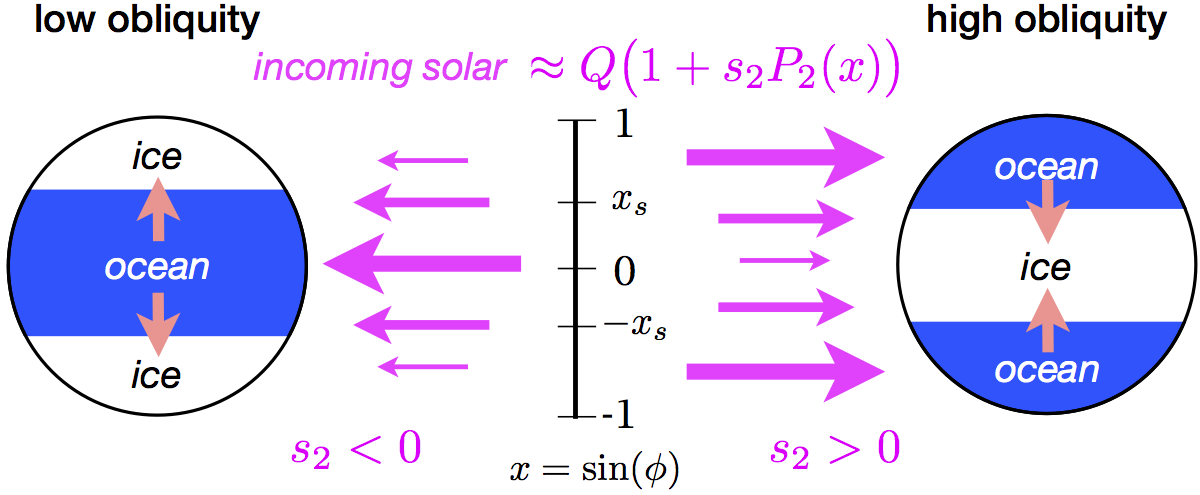New paper by Rose, Cronin and Bitz on exoplanet ice cover at low and high obliquity#
Brian’s latest paper (with colleagues Tim Cronin from MIT and Cecilia Bitz from UW) is called “Ice Caps and Ice Belts: the effects of obliquity on ice-albedo feedback”. It has been accepted for publication in the Astrophysical Journal. The paper looks at the basic rules governing planetary ice extent on Earth-like exoplanets at different obliquities. Click here for a preprint of the accepted manuscript.
Obliquity is the angle of a planet’s axis of rotation relative to its orbital plane. On Earth that angle is about 23.5º, and among other things, is the reason we have seasons. Something funny happens for planets at obliquity angles exceeding 55º. When you average over a whole year, the total amount of sunlight is largest at the poles and smallest at the equator.
This paper asks whether such a planet could exist with a stable, long-lived “ice belt” around the cold equator.

We take the well-known analytical “Energy Balance Model” from North (1975). This is one of the simplest models for the pole-to-equator surface temperature distribution and ice latitude on a spherical planet in the presence of poleward heat transport. To adapt this Earth-bound model to the exoplanet context, we do two things:
Express the model equations non-dimensionally to identify the smallest set of independent planetary parameters
Flip the model upside down for the case where obliquity exceeds 55º and the annual-average insolation gradient is reversed
We provide a complete analytical solution to the model valid for any obliquity. This solution enables some extensive analysis of the stability of ice caps and ice belts as a function of obliquity and other planetary parameters.
We find that the “ice belt” climate is easily destabilized by the ice-albedo feedback associated with albedo contrasts between the ice-free polar caps and the ice-covered equatorial regions. Consequently planets in a stable ice belt configuration should be substantially more rare than planets with Earth-like stable ice caps.